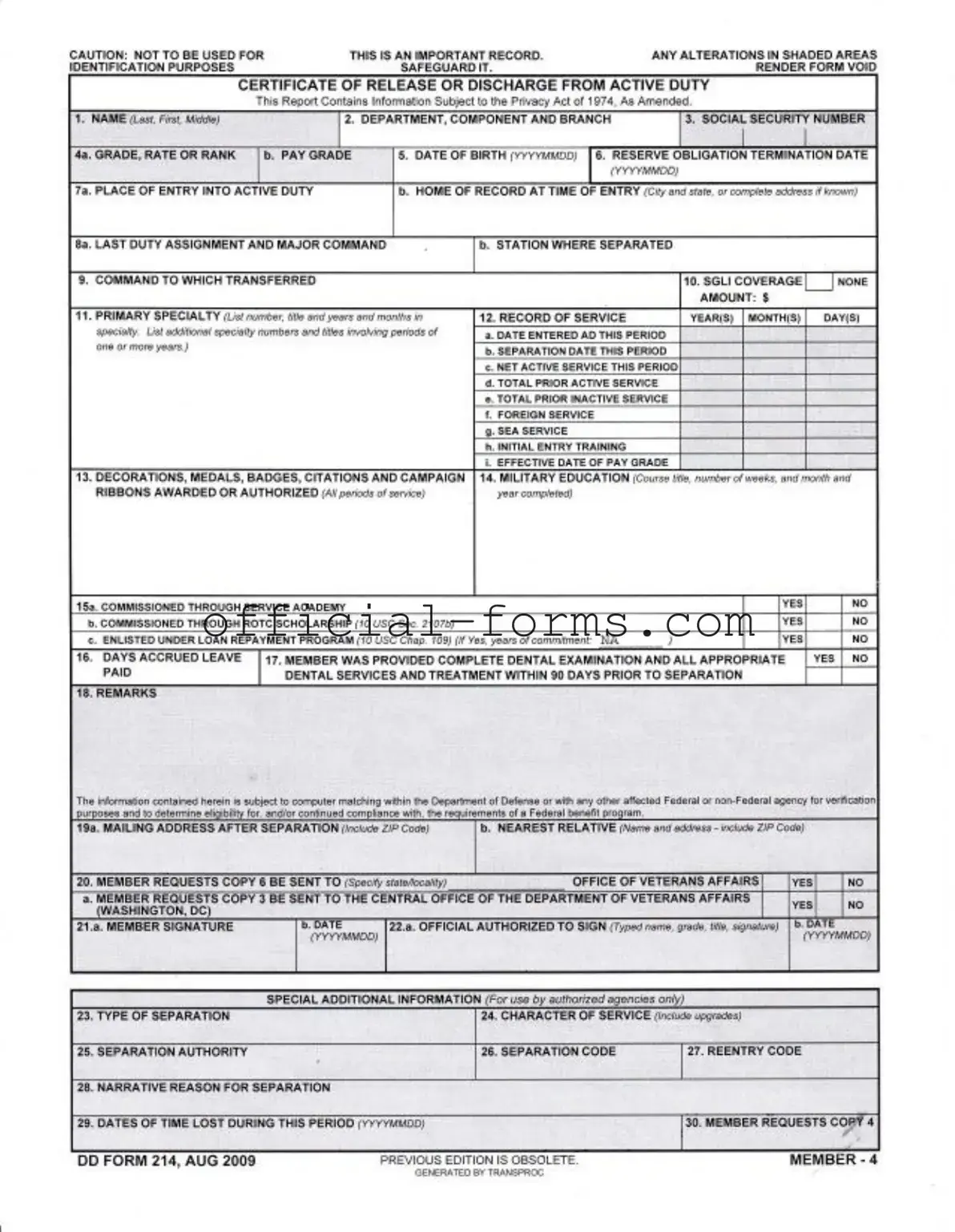The DD Form 214, officially known as the Certificate of Release or Discharge from Active Duty, is a crucial document for military service members. This form serves as a comprehensive record of an individual's time in service, detailing important information such as the member's name, social security number, and military branch. It includes key data points like the member's rank, pay grade, and the dates of service, both active and prior. Additionally, the DD 214 outlines the character of service, which can significantly impact eligibility for veterans' benefits and employment opportunities. It also highlights any decorations, medals, and awards received during service, showcasing the member's achievements. Safeguarding this document is essential, as it should not be altered or used for identification purposes. Understanding the significance of the DD Form 214 is vital for veterans navigating their post-service life, ensuring they have access to the benefits and recognition they deserve.
